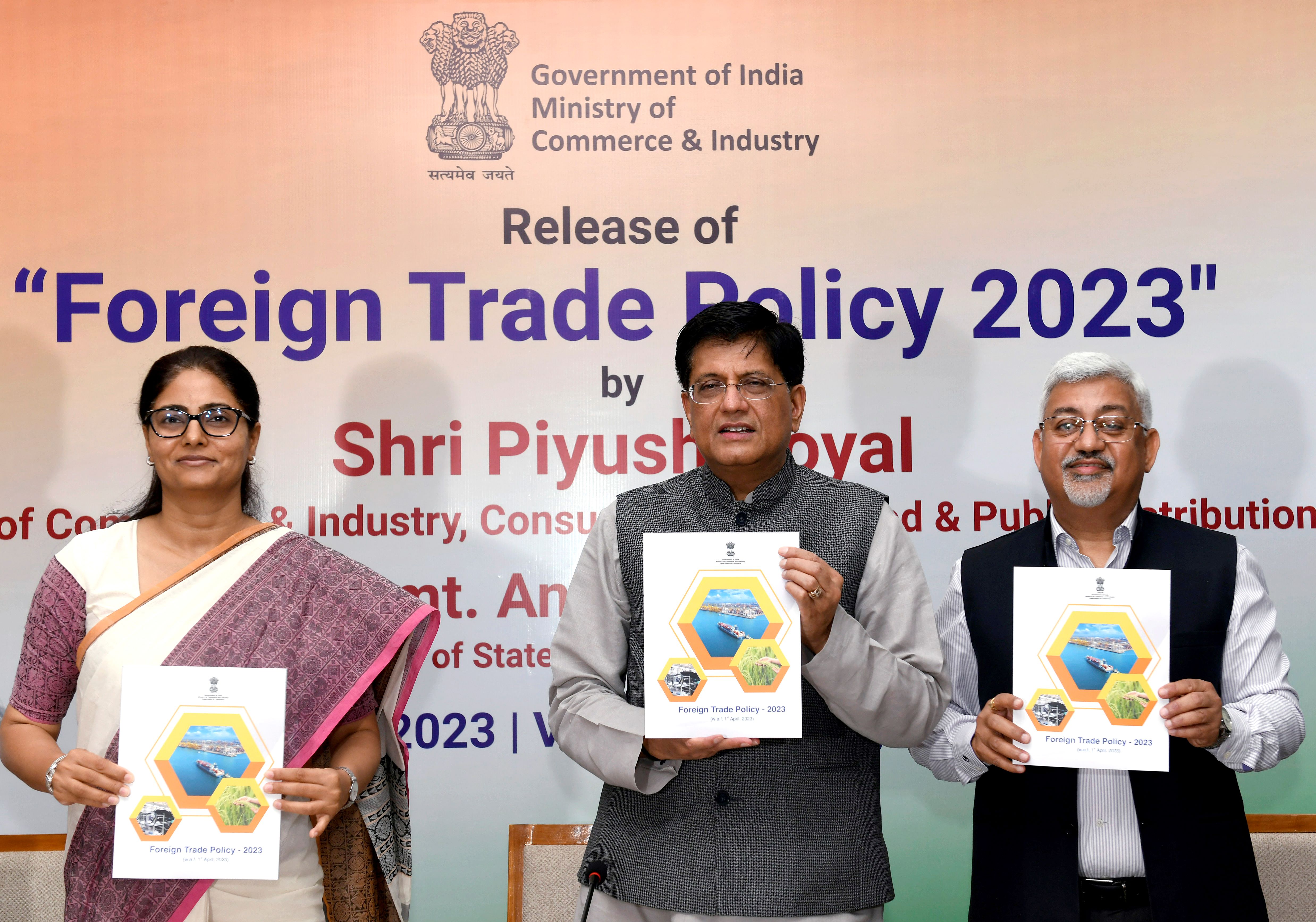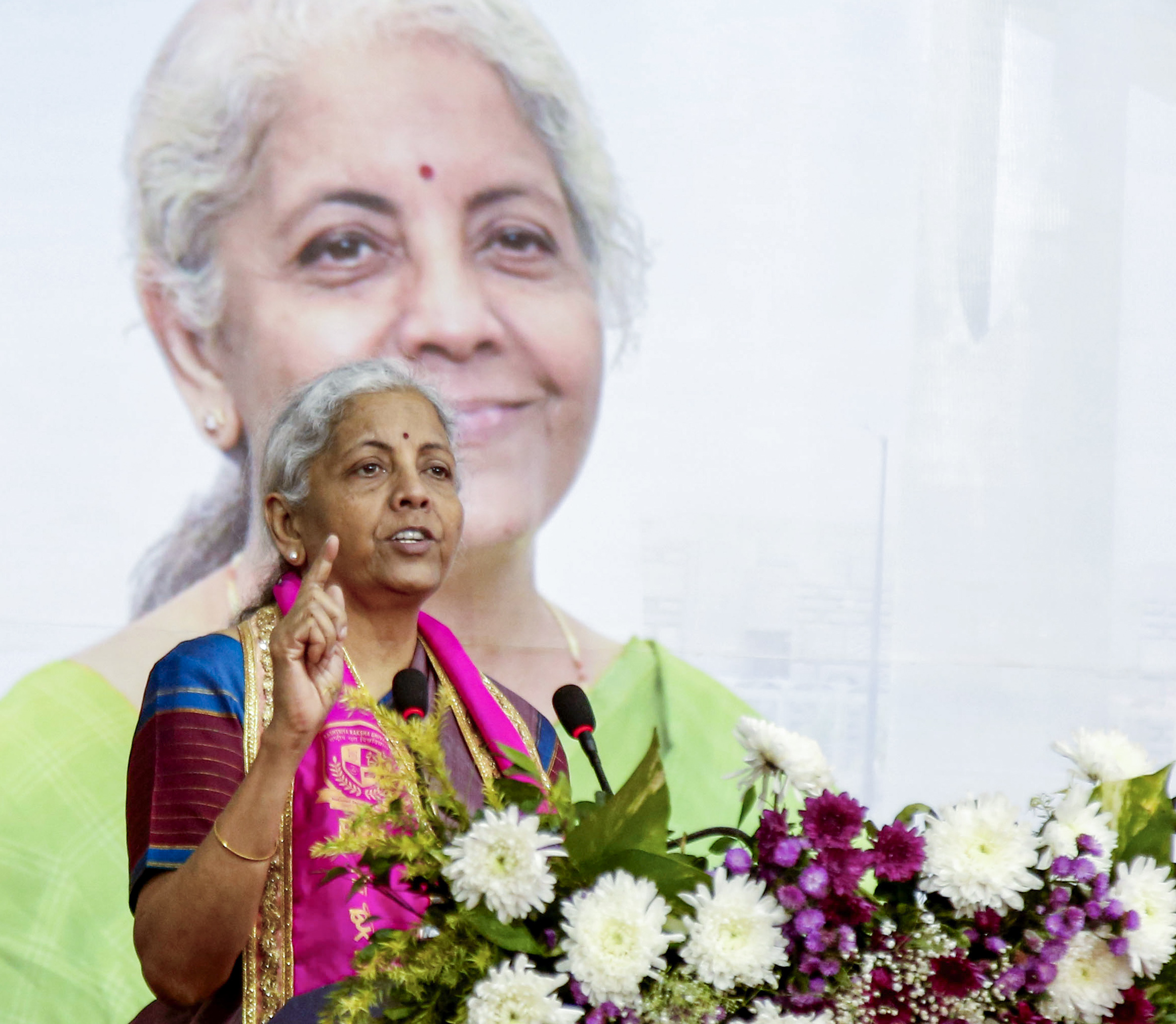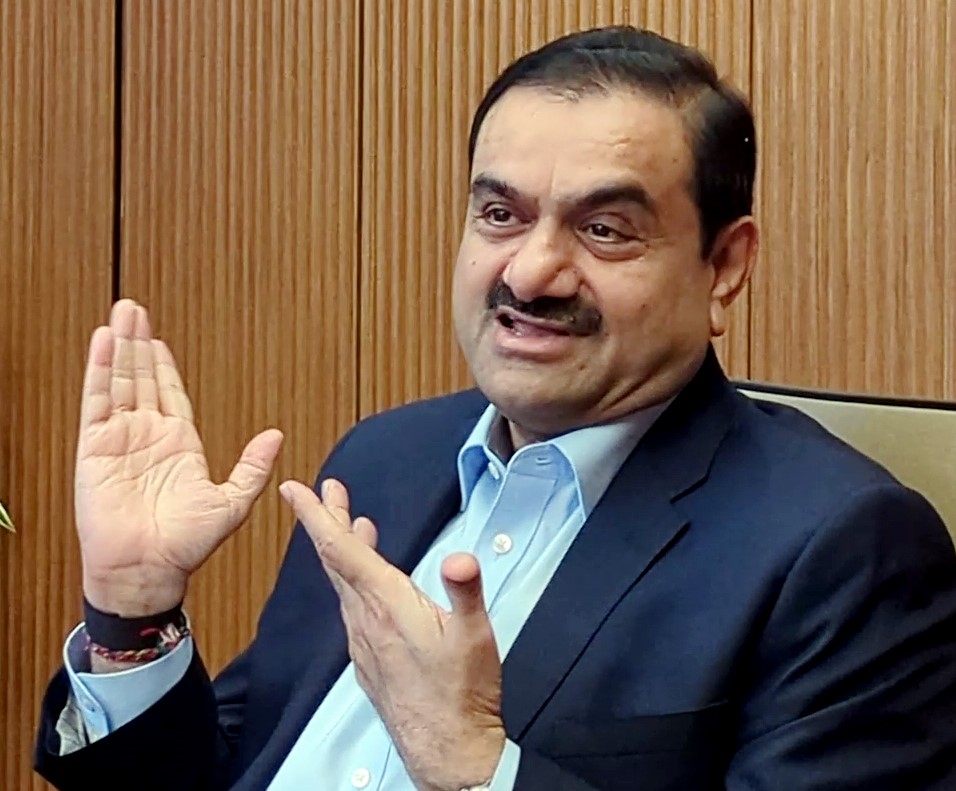Provisions for merchanting trade are also proposed. A merchanting transaction is one which involves the shipment of goods from one foreign country to another foreign country involving an Indian Intermediary
Our Bureau
New Delhi
Union Minister for Commerce and Industry Piyush Goyal while unveiling Foreign Trade Policy 2023 on Friday expressed confidence in India touching exports worth USD 2 trillion by 2030. “By 2030, we will export USD 2 trillion in services and merchandise. All embassies will help exporters in exports,” he said. The Directorate General of Foreign Trade said that the total exports in Financial Year 2023 are projected to cross USD 760 billion.
The Ministry of Commerce and Industry said Foreign Trade Police 2023 focuses on the internationalisation of trade in rupees. On the occasion, Piyush Goyal unveiled FTP 2023 which will come into effect from April 1.
The Foreign Trade Policy 2015-20, which was to end in March 2020 was extended due to the Covid-19 pandemic and volatile geo-political scenario. International trade settlement in rupee is allowed under the new policy and changes introduced for the grant of export benefits and fulfilment of export obligation for export realizations in Indian currency as per RBI norms.
The government has been working towards making the Indian rupee a global currency and allowing international trade settlement. The RBI had last year put in place an additional arrangement for invoicing, payment, and settlement of exports/imports in Indian currency. This mechanism will help in internationalizing the Indian currency in the long run. A currency can be termed “international” if it is widely accepted worldwide as a medium of exchange.
The Foreign Trade Policy 2023 being is aimed to provide policy continuity and a responsive framework.
Under the new policy, provisions for merchanting trade are also proposed. A merchanting transaction is one which involves the shipment of goods from one foreign country to another foreign country involving an Indian Intermediary.
The government believes merchanting trade is expected to facilitate trade, making India a trade hub.
Also, four new towns of export excellence (TEE) are being declared in addition to the already existing 39 towns of export excellence. They are Faridabad for apparel, Moradabad for handicrafts, Mirzapur for handmade carpet and dari, and Varanasi for handloom and handicraft.
The benefits of such export excellence are recognition, market access initiative scheme, and common service provider facility.
India’s total exports already crossed USD 750 billion. “India’s projected growth (in 2023) is more than double the projected growth for the world. The WTO’s global trade forecast predicts growth in world trade to slow down to 1 percent in 2023, due to global uncertainties. Export scenario will remain challenging,” the government said in its presentation.
In the past six-to-seven years, India’s exports have risen by about 75 per cent, as compared to 28 per cent at the global level, data showed.
During the period, engineering and agricultural exports rose 81 per cent and 61 per cent, respectively. Pharma and electronics goods rose 45 per cent and 163 per cent, respectively.
Coming to marine products and toy, they rose 63 per cent and 89 per cent, respectively, data showed.
Further, dairy sector to be exempted from maintaining Average Export Obligation. It aims to support the dairy sector to upgrade technology.
The government estimates suggest that e-commerce exports are expected to grow to USD 200-300 billion by 2030. The government will set sector-specific targets to achieve the goal of trillion dollar merchandise exports by 2030. The government will also restructure the Department of Commerce to make it future-ready.
Meanwhile, in a second consecutive weekly increase, India’s forex reserves rose $5.977 billion to $578.778 billion in the week ended March 24, the Reserve Bank of India said on Friday. In the previous reporting week, the kitty had risen by $12.8 billion to $572.8 billion.
It can be noted that in October 2021, the country’s forex kitty had reached an all-time high of $645 billion. The reserves have been declining as the central bank deploys the kitty to defend the rupee amid pressures caused majorly by global developments.
For the week ended March 24, the foreign currency assets, a major component of the reserves, increased by $4.38 billion to $509.728 billion, according to the Weekly Statistical Supplement released by the RBI.

























